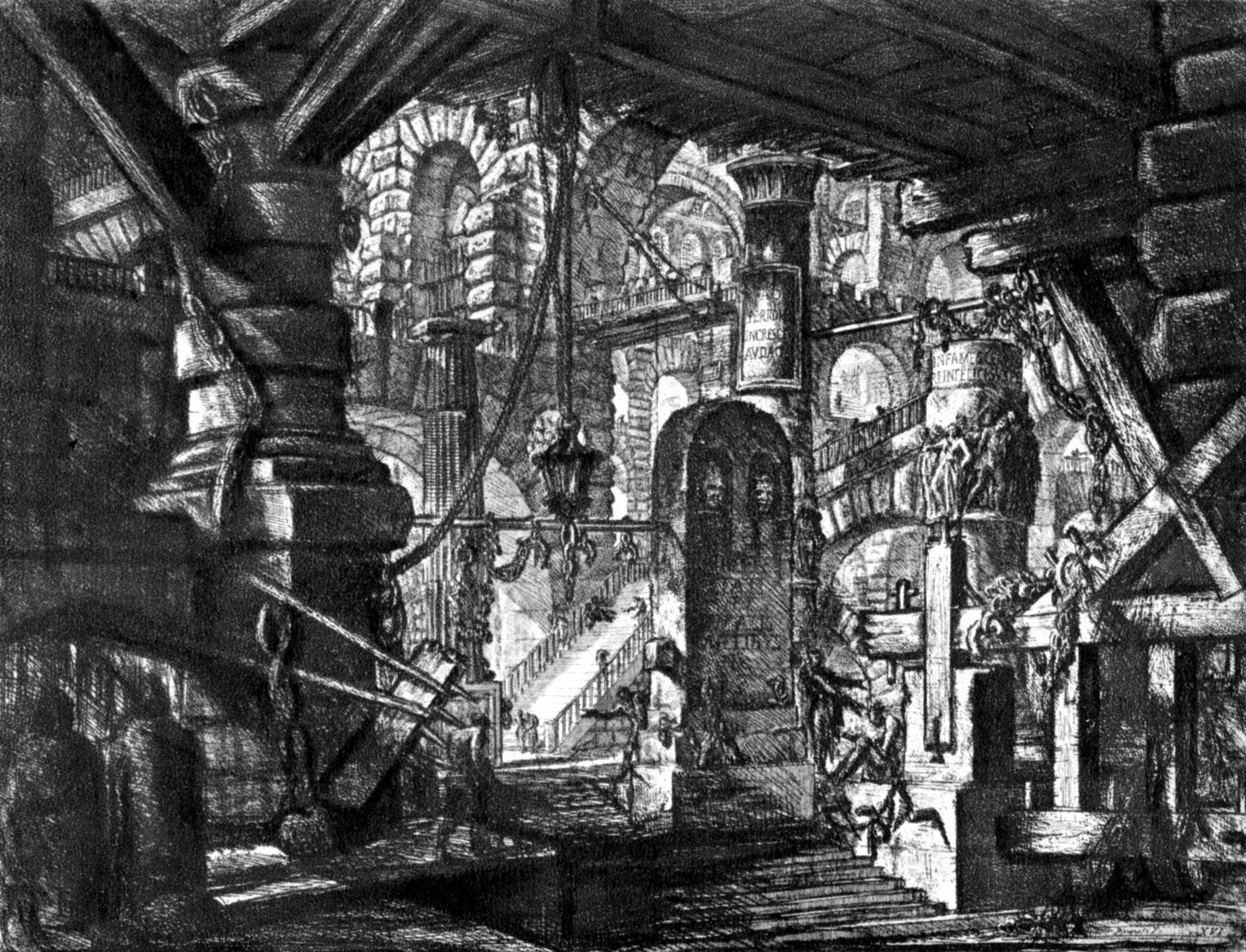
His prints, in the meantime, made him famous. When he took up printmaking, it was to make ends meet, and his elaborate title pages announced the authorship of “Giambattista Piranesi, Venetian Architect,” but he died with just one significant architectural project to his name. The actual Piranesi was born in the Veneto in 1720 and went to Rome at the age of nineteen with the dream of becoming an architect. And throughout the two centuries that followed, Giovanni Battista Piranesi the person and Piranesi the tormented trope have shared space in the world like a badly executed hologram: never invisible, never quite clear. And so on, until the unfinished stairs and the hopeless Piranesi both are lost in the upper gloom of the hall.ĭe Quincey never claimed to have seen the etching in question-he was riffing on hearsay from Coleridge-so our compassion is being called into play for an imaginary figure in an imaginary prison in an imaginary etching. But raise your eyes, and behold a second flight of stairs still higher, on which again Piranesi is perceived…. You perceived a staircase and upon this, groping his way upwards, was Piranesi himself…. “Creeping along the sides of the walls,” De Quincey wrote, He wasn’t worried about the real Piranesi, long dead by then he was considering the plight of an etched figure he understood to be Piranesi in one of the artist’s Carceri d’invenzione ( Imaginary Prisons). Gian Lorenzo Bernini - Piazza Navona te Rome Giovanni Battista Piranesi - The Grand Piazza Tourist Attraction - Blue church dark, religion.“Whatever is to become of poor Piranesi,” mused Thomas De Quincey in his 1821 Confessions of an English Opium-Eater. Thunderstorm canim lake british columbia.

) Plattegrond van Tempel van Juno Regina te Rome A large body of water surrounded by trees. (Galleria grande di Statue, la cui struttura è con Archi e col lume preso dall'alto. Plate 85: View of the Contarini Palace in Campo San Trovaso, Venice, 1703, from "The buildings and views of Venice" (Le fabriche e vedute di Venezia) Plate 96: View of the facade of the Pisani Palace in Campo Santo Stefano, Venice, 1703, from "The buildings and views of Venice" (Le fabriche e vedute di Venezia) Large sculpture gallery built on arches and lit from above. His tomb was designed by Giuseppi Angelini. He died in Rome in 1778, and was buried in the church he had helped restore, Santa Maria del Priorato. In 1761 he became a member of the Accademia di San Luca and opened a printing facility of his own.

#Piranesi carcere oscura series#
In 1748–1774, back in Rome, he created a series of vedute of the city which established his fame.

From 1743 to 1747 he was back in Venice where he often visited Giovanni Battista Tiepolo. He worked with pupils of the French Academy in Rome to produce a series of vedute (views) of the city. He was apprenticed of his uncle, who was a leading architect in Magistrato delle Acque, the state organization responsible for engineering and restoring historical buildings.įrom 1740, he worked in Rome as a draughtsman for Marco Foscarini, the Venetian ambassador. Giovanni Battista Piranesi, famous for his etchings of Rome and of fictitious and atmospheric "prisons" (Le Carceri d'Invenzione), was born in Veneto, the Republic of Venice in a family of stonemasons and architects.


 0 kommentar(er)
0 kommentar(er)
